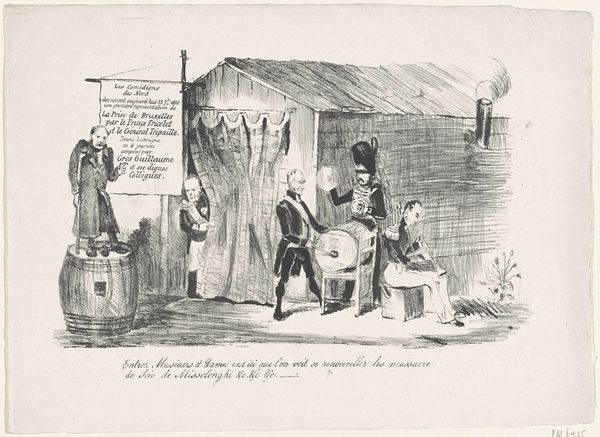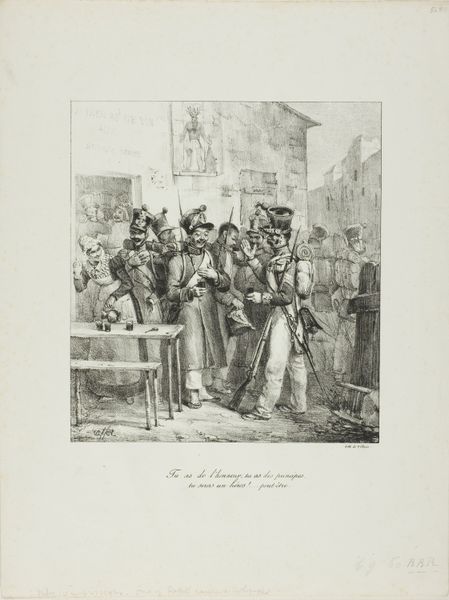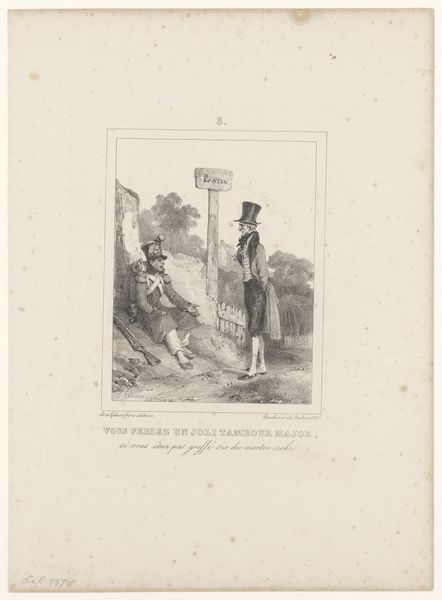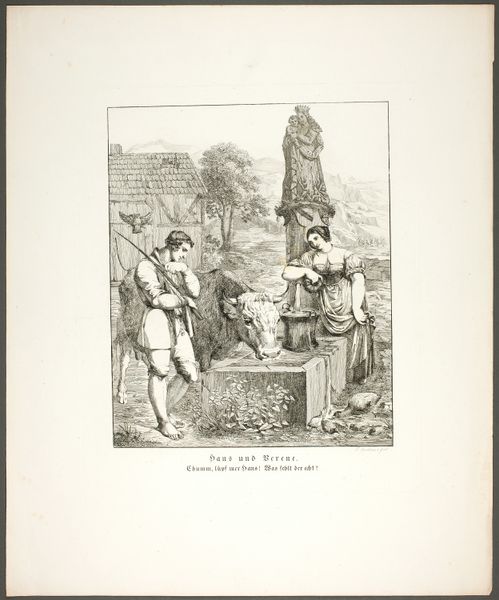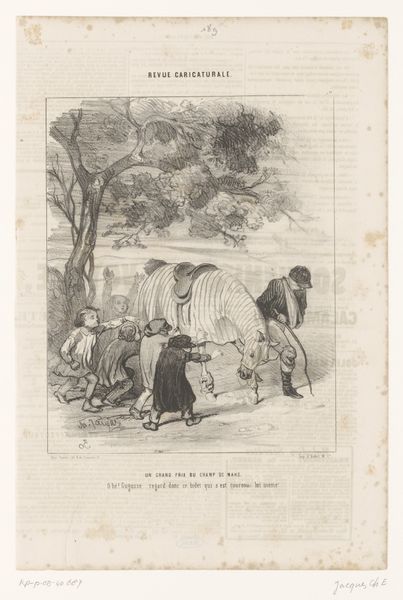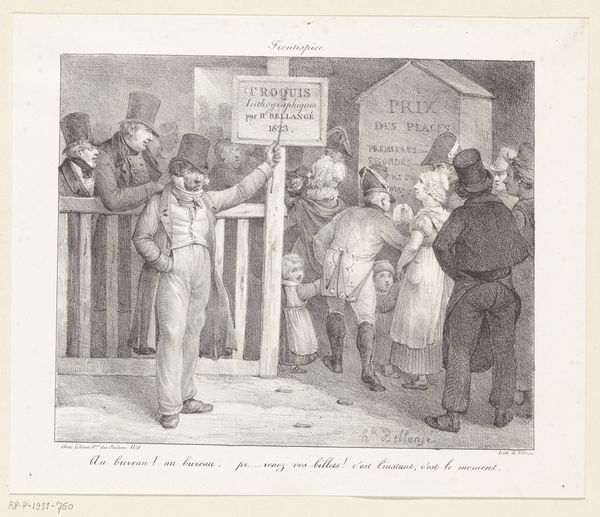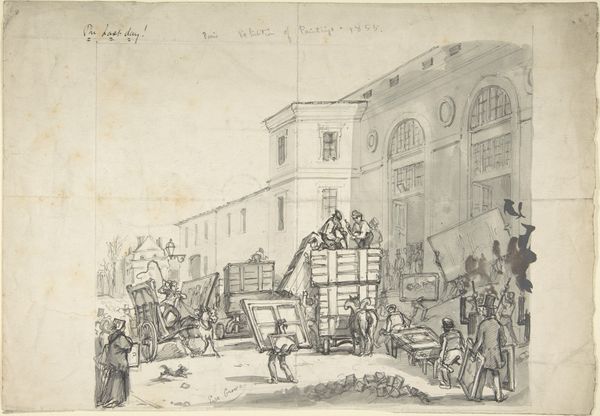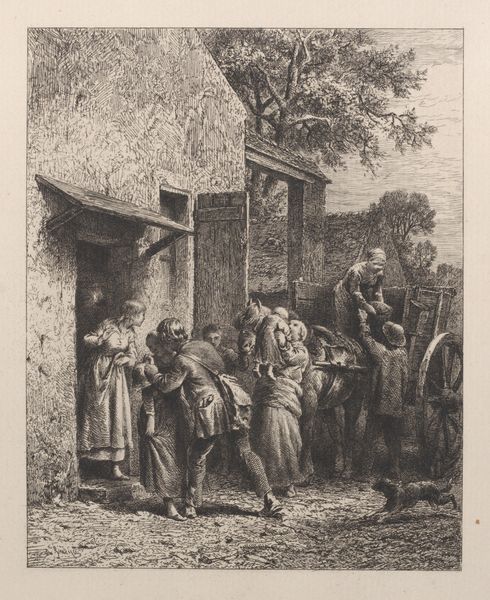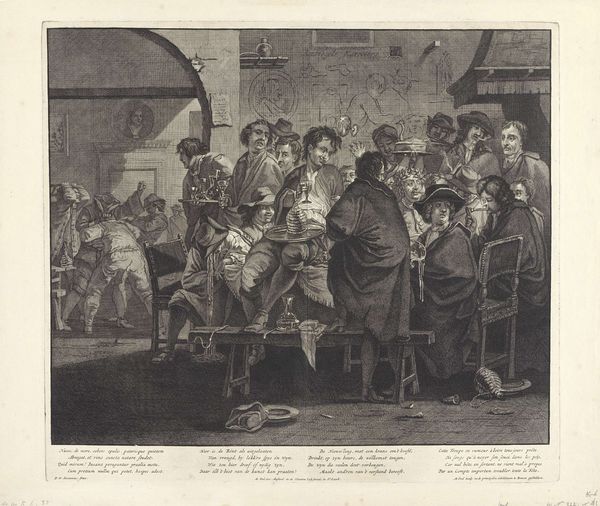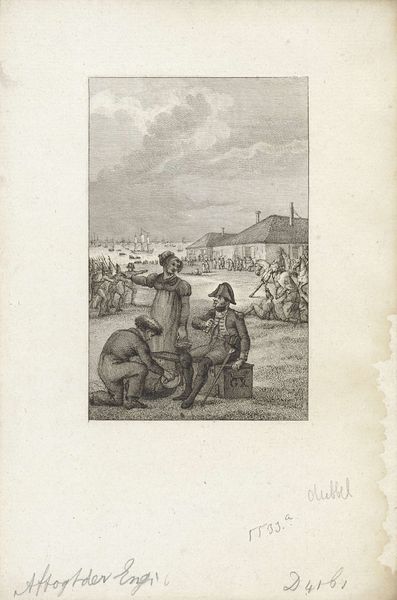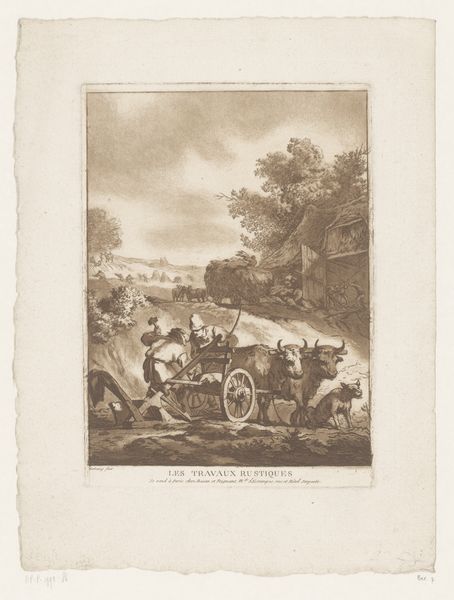
print, engraving
#
light pencil work
#
quirky sketch
# print
#
pen sketch
#
pencil sketch
#
personal sketchbook
#
sketchwork
#
pen-ink sketch
#
line
#
sketchbook drawing
#
cityscape
#
genre-painting
#
storyboard and sketchbook work
#
sketchbook art
#
engraving
Dimensions: height 172 mm, width 132 mm
Copyright: Rijks Museum: Open Domain
Curator: Rombertus Julianus van Arum created this engraving, "Lezende jongen voor een boekenkraam," sometime between 1827 and 1883. Editor: My initial reaction? The boy's completely lost in that book, oblivious to the bustle around him! The line work is surprisingly delicate for a bustling cityscape, almost as if it belongs in a private sketchbook. Curator: It is fascinating how Van Arum captures the commercialization of literature within the burgeoning urban environment. The presence of the bookstall signals an important shift in the availability of printed material. Books began to reach a wider audience, shaping public opinion and literacy in unique ways. Editor: Definitely feels like the moment knowledge shifted from the hands of the elite, trickling down like that rooftop rainwater! I love how the city's hard angles fade softly into the leafy overgrowth. Does that symbolize how the exchange of wisdom is slowly shaping society’s rigid walls, perhaps? Curator: The contrast between the solid architecture of the city walls and the temporary nature of the bookstall underscores the idea that while institutions might be enduring, cultural trends, even those promoted through printed matter, are fluid. The artist’s clever depiction also reminds us that access to literature was a critical ingredient to participate in socio-political life. Editor: So true. And even the perspective of the characters depicted creates a conversation. See how the bookseller practically looms, observing the bookish youth, one wonders if their interactions carry political dimensions. The composition seems to say, knowledge isn't always free, eh? There's always a transaction, an exchange of power dynamics lurking in the shadows of a market economy. Curator: I agree that it's an incisive work, considering the evolving role of published information during the nineteenth century. One is encouraged to see it in the larger context of cultural revolutions shaping the arts. Editor: Exactly, the drawing holds so much layered, societal meaning behind what it appears to portray at first glance. Curator: Indeed, a truly captivating scene, made even more so with our exploration of the image. Editor: Precisely, and hopefully inspiring us to seek meaning beyond the book's pages!
Comments
No comments
Be the first to comment and join the conversation on the ultimate creative platform.
